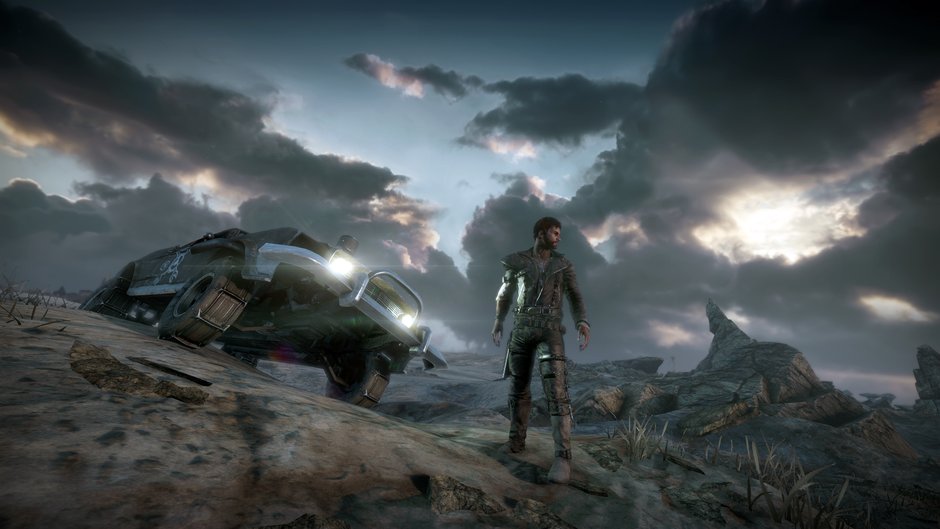
Want to get the best gaming experience with the highest fidelity graphics? The obvious solution has almost always been to go with a PC, unless you're talking about a console exclusive title. But while PC gaming has led the charge with better textures, dynamic lighting, particle effects and more – the big question is where will the industry go next.
Recently, TechRadar sat down with Avalanche Studios, the developers behind the hotly anticipated Just Cause 3 and Mad Max games to delve into this very subject. As Avalanche Head of Research Emil Persson explained, pushing the graphical envelope in games isn't just about better textures, it's also a matter of making them look more realistic.
High-dynamic lighting
"Just Cause 2 was still using an low-dynamic range pipeline [and with it] we were able to squeeze an awful lot of image quality out of that," Persson explained. "Eventually, the move to high-dynamic range allowed us to work much more naturally and create more realistic lighting."
The Just Cause 3 team has been working in a pipeline with HDR for several years, and in that time they've also introduced physics-based lighting and clustered shading. The latter of which, according to Persson, allows the game use many, many lights simultaneously without adverse effects on the frame rate.
On top of introducing better lighting techniques, Persson highlighted players will notice another clearly visible improvement in their terrain engine. With Just Cause 3, the studio promises a lusher world filled with tiny details such as overhangs, tunnels and sea stacks seamlessly incorporated into the environment.
Unlike a traditional terrain system, Persson said his team could create an interesting landscape without the need for separate meshes, stretched textures or visible seams. "A truly next-gen terrain system will be a differentiating factor for us," he quipped.

Level of detail
But it isn't just a matter of using all your resources at once. Persson explained that the Avalanche engine uses an extensive Level-Of-Detail system that optimizes the amount of detail render objects depending on their distance from the player.
Get the best Black Friday deals direct to your inbox, plus news, reviews, and more.
Sign up to be the first to know about unmissable Black Friday deals on top tech, plus get all your favorite TechRadar content.
"So for instance for vegetation, close up you will see individual trees and bushes as highly detailed models," Persson said. "[These] also react to the weather and can be interacted with by the player, or even destroyed."
"A little bit further away we will drop detail, but you are unlikely to notice unless you know exactly what to look for," he said. "Eventually we batch trees together, and further off they become 2D billboards, and really far it really just a textured carpet giving the impression of a forest."
Beyond vegetation Persson says their Level-Of-Detail system also manages character models and AI, strongholds in the world and even the weather. In essence best overall visual quality with the given computational power and memory available in the users' systems.
"We can't have the entire world simulating at once, so we need to be a bit smarter about it and use our available power where it matters the most," he expounded.
Indirect console benefits
Indirectly, the new Xbox One and PS4 consoles might be the biggest relief for Avalanche Studio's workload. Rather than having to develop Just Cause 3 and Mad Max for three different architectures, Persson said his team can focus on programing one PC version and scale it accordingly for everything from a fully loaded gaming PC or laptop to the architecturally-similar Xbox One and PS4.
"Before, we had two consoles with two very different GPUs, with very different performance characteristics and feature sets," he said. On the CPU front things were especially disparate with the Xbox 360 and PS3 running a PowerPC platform while PC's were of course built with an x86 processor.
"Fast forward to this generation. Both consoles are using a fairly standard GPU that's also quite commonly found in gaming PCs," he said. "The overall performance of the consoles are the same, so any optimization we do will likely benefit all platforms, unlike in the past were a change could speed up one console but slow down the other."

Burning up
On the purely PC side, this also frees up Persson to focus on making Just Cause 3 and Mad Max the best games they can be. "In the past, the PC suffered for being more powerful than we could necessarily take advantage of," Persson explained. "As long as we needed to support much less capable consoles there was always a problem of finding meaningful things we could spend the spare cycles of the PC on."
The Avalanche Studios team expects this will be a much smaller problem now. Memory-wise, the consoles meet the standards of a typical gaming PC and even exceed a large number of PC systems. What's more, the graphics cards inside the consoles can keep fairly on pace with mainstream systems.
"Since the GPUs are the same basic architecture," he began. "It's easier to tune algorithms, and the performance differences only means we need to be able to scale the work a little according to each platform's power."
"There are, of course, high-end GPUs [on PC] that are far more powerful, [so] there's definitely still room for us to come up with interesting extras to spice up PC versions of our games."
- Final Fantasy is the first look at PC gaming with DirectX 12 and Windows 10
Kevin Lee was a former computing reporter at TechRadar. Kevin is now the SEO Updates Editor at IGN based in New York. He handles all of the best of tech buying guides while also dipping his hand in the entertainment and games evergreen content. Kevin has over eight years of experience in the tech and games publications with previous bylines at Polygon, PC World, and more. Outside of work, Kevin is major movie buff of cult and bad films. He also regularly plays flight & space sim and racing games. IRL he's a fan of archery, axe throwing, and board games.
Most Popular


